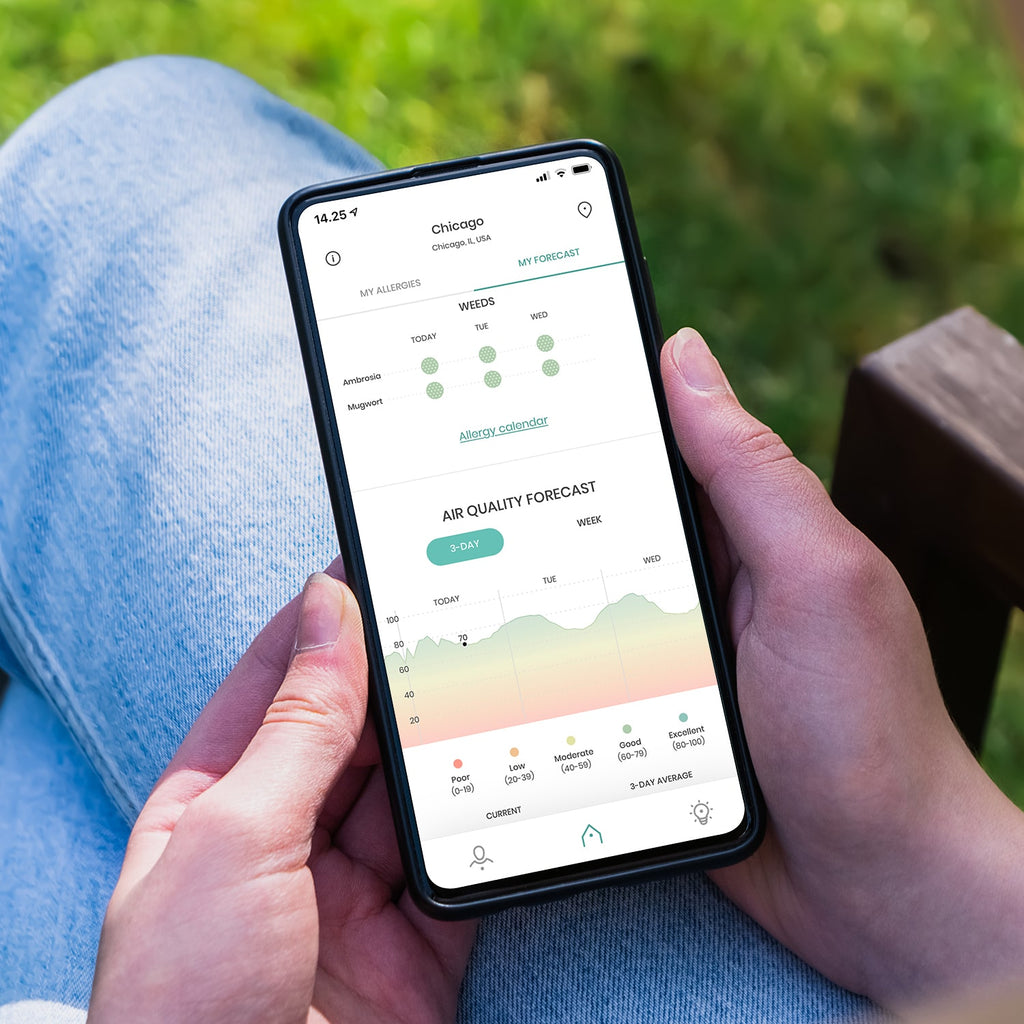Get your Pollen updates on the go.
Download our free app today
- > 3-day pollen forecast
- > Detailed pollen, weather and air quality data
- > Personalised insights
- > Our allergy expertise in your pocket

Check the forecast because the weather can affect pollen release and spread.
Keine Werte verfügbar
Keine Werte verfügbar
Keine Werte verfügbar
Keine Werte verfügbar
Keine Werte verfügbar
Keine Werte verfügbar
Keine Werte verfügbar
Keine Werte verfügbar
Keine Werte verfügbar
>

Temperature

Humidity

Wind
Source: Google
Plan your day around the pollen levels in your area.
The map is updated regularly.
Source: Google

If you have hay fever, checking the pollen count every day can help you manage your symptoms. You can plan your activities around current pollen levels and take necessary precautions. Enter your city or address in the box at the top of the screen and you'll be able to see your local pollen count for today.
Avoiding pollen is one of the big challenges for allergy sufferers. It’s invisible. Clouds of the pesky stuff can fill the air and the first you know about it is when the sneezing starts. Symptoms of hay fever may get worse during periods with a high pollen count.
During pollen season, it can be helpful to know what’s in the air, even more so during peak season. Detailed information about the pollen count, pollen forecast, weather forecasts and pollen calendar can be your early warning system. The pollen count can show you when and at which locations pollen levels are expected to be high
Google provides our pollen forecast, for this page and in our allergy app. Using advanced technology and data analytics, Google provides location-based air quality and pollen information.
Google collates many different sources of pollen data and standardizes how it's measured and reported. The technology covers more than 65 countries worldwide.

You’ll find the pollen count for today on this page. Get our app to see the pollen forecast for the next three days and find out about pollen types.
With the data analytics of Google behind it, the klarify app offers you location-based pollen forecasts and current pollen levels for specific tree, grass and weed pollen. It also has air quality information and weather data. You can check the pollen count daily or get alerts that show when pollen levels are changing in your area.
Pollen forecasts are more complicated than you may think. You see, pollen allergy is a very personal thing and the pollen count affects everyone differently. Use the allergy tracker in our app to log how your hay fever is making you feel each day. It's like an allergy diary, so you'll be able to see exactly the way changing pollen levels affect your symptoms. You'll also get personalized allergy insights.
Download the free klarify app and keep on top of your hay fever today, tomorrow and every day.
Pollen allergy is an allergic reaction to the tiny particles plants release as part of their reproductive cycle. The medical name for it is seasonal allergic rhinitis but you probably know it as hay fever.
When you've got hay fever your immune system overreacts to the pollen grains in the air resulting in an allergic reaction. You could experience hay fever symptoms any time from spring through to fall – depending on the type of pollen you’re reacting to and the pollen count, of course.
Are you regularly checking the pollen counts but don't know the pollen types to look out for? It can be a challenge to determine exactly which pollen is causing your symptoms. And if you have hay fever, you may be allergic to only one or to several different pollen types. Allergy testing can help you and your doctor work that out.
How you experience your hay fever depends on what your trigger is, where you live and the weather. Everyone has a personal pollen allergy season.
It depends on the region and the climate, but pollen is typically released from early spring, through the summer months and into autumn. Climate change is affecting the pollen count. The timing of tree and grass pollen seasons depends on when spring temperatures break the winter. Global warming may be prolonging the pollen season of some plants and trees.
Ragweed pollen is one of the worst culprits for allergies. It only takes 10 grains of ragweed pollen in a cubic meter of air to trigger an allergic reaction. Ragweed has been a health problem for decades. The spread of ragweed across the world is being enhanced by global warming and changes in agriculture and travel.

The plants usually causing hay fever are the ones that distribute pollen by wind rather than relying on bees and other insects. Many different types of pollen can cause pollen allergy.
As part of their pollination process these plants release millions of grains a day. And these grains can travel hundreds of miles carried by the wind to different locations. It’s little wonder pollen counts are usually higher in a hot spell or when it’s windy.
Sun and rain can have an impact on the pollen count and the pollen season. Rain helps pollinating plants grow well. If it’s followed by dry weather, pollen can be in abundance. Dry and windy weather are ideal conditions for a high level of pollen to be carried in the wind as the grains are so small and light.
As our climate changes and environmental patterns become harder to predict, pollen seasons also become less regular and more difficult to forecast. But our pollen data provider Google uses sophisticated AI-driven data analysis and prediction methods. This ensures our 3-day pollen forecasts are timely and accurate.
Pollen allergies are increasing, especially in urban areas. Typical symptoms include:
Closely monitoring the daily pollen count and latest allergy forecast can help you be proactive in managing your allergy health.
Our pollen forecast shows you the pollen levels for the day and helps you predict when your allergy is likely to strike. Then you can better plan your activities. Check today's pollen count every day and be prepared before you go outside.
To get daily pollen levels, weather and air quality data for your location, plus 3-day forecasts, download our app today. klarify: the smart way to manage your allergy.

Choose a state or metro area below to view the pollen forecast in that area.